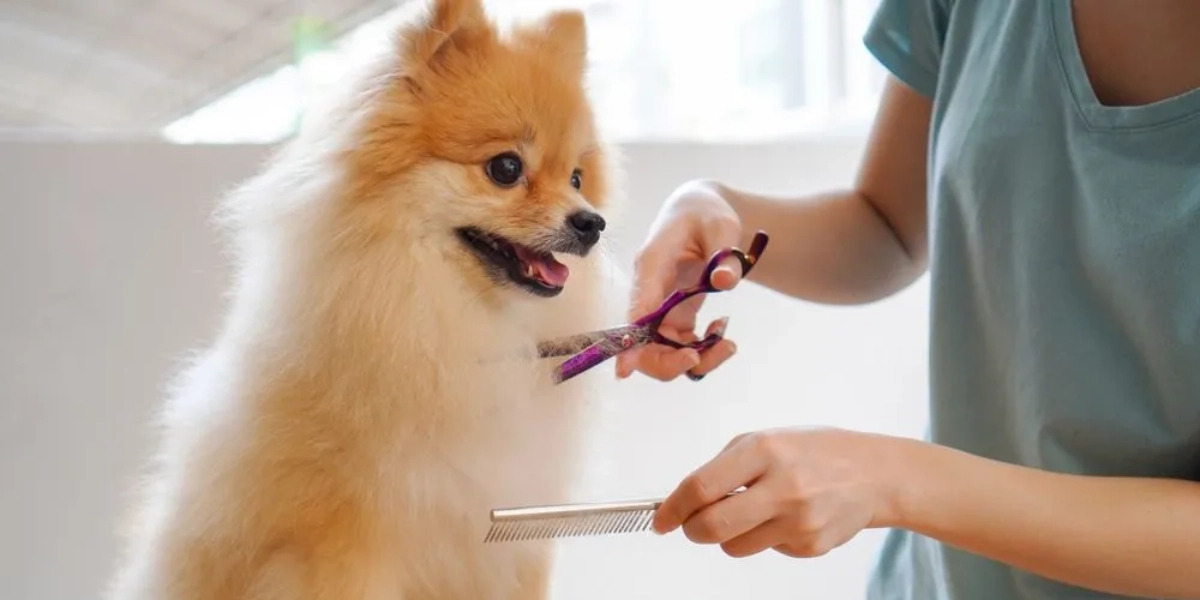Pet grooming isn’t just a way to keep your furry friend looking their best. It’s a vital part of their overall health and happiness. Pet Grooming helps prevent health issues, improves their comfort, and even enhances the bond you share with them. But here’s the thing – grooming needs aren’t one-size-fits-all. They vary based on your pet’s breed, coat type, and even their lifestyle. This guide will walk you through everything you need to know about how often you should groom your pet based on their unique characteristics.
Why Regular Grooming is Essential for Pets
Let’s talk about why grooming is so important. We all know it keeps pets looking neat and clean, but the benefits go much deeper.
Health Benefits
Regular grooming prevents painful matting, reduces shedding, and keeps your pet’s skin healthy. It’s easy for dirt, allergens, and even pests to hide in your pet’s coat, but grooming helps you catch these things early. A clean, mat-free coat is more than just a luxury – it’s a key part of a healthy pet’s life.
Behavioral Benefits
Grooming isn’t just about aesthetics; it can make your pet feel more comfortable and relaxed. Pets often become anxious if their fur is matted or their nails are too long, which can affect their behavior and mood. A good grooming session can be as calming for them as a spa day is for us.
Early Detection
One of the hidden benefits of grooming is early detection. Regularly brushing, bathing, and inspecting your pet allows you to spot issues like lumps, skin irritations, or parasites before they become serious health problems. For example, I once noticed a small bump on my dog’s skin during a routine brushing session, and we caught a health issue early thanks to that observation.
Understanding Different Coat Types and Grooming Needs
Every coat type has its own grooming requirements. Here’s a quick breakdown:
- Short Coat: These pets have minimal grooming needs but still benefit from regular brushing to remove loose fur and dirt.
- Medium Coat: Needs more frequent brushing to prevent matting and manage shedding.
- Long Coat: Requires consistent detangling and brushing to avoid mats, especially around sensitive areas like the belly and behind the ears.
- Curly/Wavy Coat: Needs regular trimming and specialized grooming to maintain shape and prevent knots.
- Double Coat: Tends to shed seasonally, requiring extra attention during those times to prevent matting and excessive hair around the house.
- Hairless: Hairless breeds have unique skin-care needs, such as moisturizing to prevent dryness and sunscreen to protect against sunburn.
Grooming Frequency Guide by Breed and Coat Type
To make things easier, here’s a breakdown of grooming schedules based on popular coat types and breeds.
Short-Coated Breeds
- Examples: Beagles, Boxers, Dobermans
- Grooming Schedule: Every 4-6 weeks, although they benefit from weekly brushing.
- Tips: Even though their coat is short, these breeds shed regularly. Weekly brushing with a rubber brush or a grooming mitt helps keep shedding under control.
Medium-Coated Breeds
- Examples: Golden Retrievers, Border Collies, Labradors
- Grooming Schedule: Every 3-4 weeks, with more frequent sessions during shedding seasons.
- Tips: Use a slicker brush to gently detangle and remove loose fur. A deshedding tool can be helpful for managing the thick undercoat that some medium-coated breeds have.
Long-Coated Breeds
- Examples: Shih Tzus, Afghan Hounds, Lhasa Apsos
- Grooming Schedule: Weekly brushing, with professional grooming every 4-6 weeks.
- Maintenance Tips: Long coats require consistent care to prevent mats. Using a detangling spray can make brushing easier and less painful for your pet.
Curly or Wavy-Coated Breeds
- Examples: Poodles, Bichon Frise, Portuguese Water Dogs
- Grooming Schedule: Professional grooming every 4-6 weeks to maintain their curls and prevent matting.
- Tips: Regular brushing at home is essential to prevent tangles. Use a slicker brush or comb specifically designed for curly coats.
Double-Coated Breeds
- Examples: Huskies, German Shepherds, Akitas
- Grooming Schedule: Every 3-4 weeks, increasing during shedding seasons.
- Maintenance Tips: Double-coated breeds have a thick undercoat that sheds seasonally. A deshedding tool is particularly effective for removing loose undercoat fur and preventing matting.
Hairless Breeds
- Examples: Sphynx Cats, Xoloitzcuintli, Chinese Crested
- Grooming Schedule: Weekly grooming focused on skin care.
- Skin Care Tips: Hairless breeds need special care to keep their skin healthy. They’re prone to dryness and sunburn, so regular moisturizing and occasional baths are essential. Consider using pet-friendly sunscreen if they spend time outdoors.
Signs Your Pet Needs Immediate Grooming Attention
Even with a set grooming schedule, it’s good to keep an eye out for signs that your pet might need grooming sooner:
- Mats or Knots: Tangled fur can be painful and lead to skin infections.
- Excessive Shedding or Hair Loss: Shedding is natural, but an increase can indicate health issues.
- Dirt Buildup Around Eyes, Ears, or Paws: Regular cleaning of these areas prevents infections.
- Unusual Odors or Skin Irritation: These could be signs of infections or skin problems that need attention.
Tips for Grooming Your Pet at Home
If you’re looking to handle some grooming at home, here are a few essentials:
- Basic Tools: Depending on your pet’s coat, you may need a slicker brush, comb, grooming mitt, or deshedding tool.
- Routine Maintenance: For short-haired breeds, brushing once a week may suffice, while long-haired pets benefit from daily detangling.
- Make Grooming Fun: To help pets get used to grooming, try making it a positive experience by using treats or playing their favorite music.
When to Seek Professional Grooming Services
While some grooming can be done at home, certain situations call for a professional’s touch. Here’s when it’s best to leave it to the experts:
- Specialized Cuts and Styles: If your pet has a breed-specific look, such as a Poodle cut, a professional groomer can help.
- Complex Coat Types: Long, curly, or double coats are often easier to maintain with professional grooming.
- Behavioral or Health Issues: If your pet is anxious or has a condition that complicates grooming, groomers can often manage these with the right techniques.
Conclusion
Grooming is one of those things that can seem optional, but it’s a crucial part of keeping our pets happy and healthy. A regular grooming schedule – tailored to your pet’s breed and coat type – can prevent discomfort, improve their mood, and even catch health issues before they become serious. If you’re unsure about how often to groom or what tools to use, it’s worth consulting a professional groomer or veterinarian for advice. After all, a well-groomed pet is a happy pet, and by keeping up with their grooming needs, we’re giving them the best quality of life possible.
Pet grooming isn’t just about appearance; it’s a way of saying “I care” in a language that our pets understand. So, as you plan your pet’s grooming routine, remember that each session strengthens the bond between you and your furry friend. Regular pet grooming not only keeps your pet looking sharp but ensures they’re in peak health and feeling loved – and that’s something they’ll surely thank you for.




